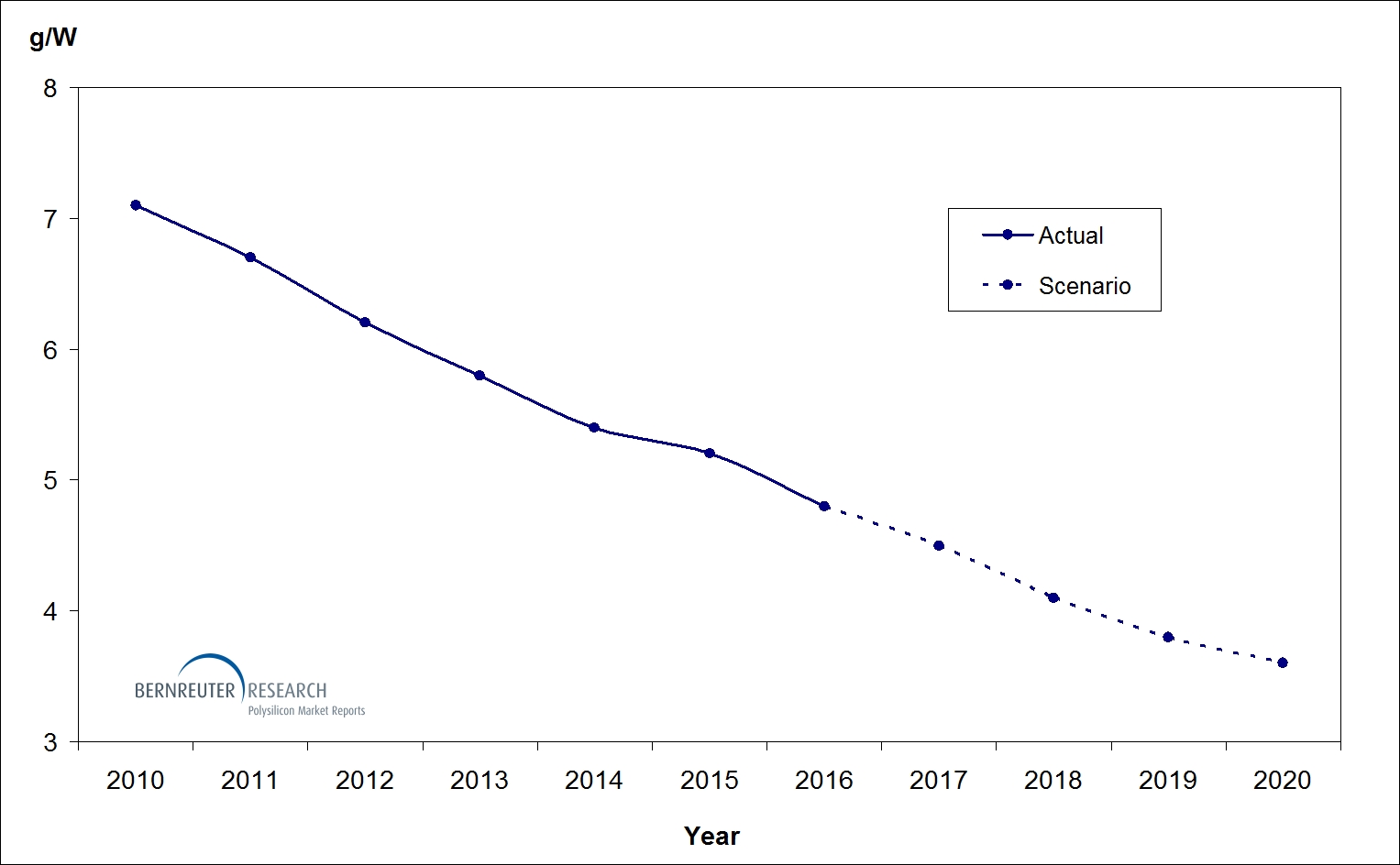The average silicon consumption for the production of multi- and mono crystalline solar cells will decrease significantly in the coming years. According to a recent study by Bernreuter Research, the amount of silicon used for the production of one watt will fall from the current 4.8g to 3.6g by 2020. This is equivalent to a decrease of 25%, according to market researcher Johannes Bernreuter's new “Polysilicon Market Outlook 2020”.
Losses from sawing ingots into wafers will be significantly reduced by the use of diamond wire. Diamond wire is much thinner than conventional saws, which are wetted with a suspension of silicon carbide particles (100 microns). According to Bernreuter, diamond wire saws additionally allow higher output and lower costs in wafer production.

Diamond wire saws have become more competitive, and have already achieved a large market share in the production of mono crystalline wafers. In addition, the manufacturers of mono crystalline wafers, as Longi Green Energy Technology, are advancing the technology with a massive expansion of its production capacity. For this reason, Bernreuter expects that the market share of mono crystalline wafers will increase from 27% in 2016 to 47% in 2020.
Popular content
Diamond wire sawing may soon be adopted in multi-crystalline wafer also. The previous problem of an overly smooth, highly reflective surface after sawing with diamond wire, which up to this point had hampered the use of this method in multicrystalline wafers, has now been remedied. Several companies now offer adapted etching processes, for instance with a metal catalyst to texture diamond-wire-sawed multicrystalline wafers. According to Bernreuter, a large number of big manufacturers have already begun to switch their wafer production facilities to diamond wire. “Experts estimate that the change will take up to four or five years for the industry as a whole,” said Bernreuter. “This is why we expect more than 90% of the multicrystalline wafers to be sawn by diamond wires in 2020.”
Based on the assumption of reduced consumption of silicon in wafer production, Bernreuter warned that the polysilicon industry would have to prepare for a fall in demand. This is further reinforced by a drop in the global photovoltaic installations. All in all, he assumes that for every newly installed gigawatt of PV power in 2020, only half as much silicon will be needed as in 2010.
This content is protected by copyright and may not be reused. If you want to cooperate with us and would like to reuse some of our content, please contact: editors@pv-magazine.com.


By submitting this form you agree to pv magazine using your data for the purposes of publishing your comment.
Your personal data will only be disclosed or otherwise transmitted to third parties for the purposes of spam filtering or if this is necessary for technical maintenance of the website. Any other transfer to third parties will not take place unless this is justified on the basis of applicable data protection regulations or if pv magazine is legally obliged to do so.
You may revoke this consent at any time with effect for the future, in which case your personal data will be deleted immediately. Otherwise, your data will be deleted if pv magazine has processed your request or the purpose of data storage is fulfilled.
Further information on data privacy can be found in our Data Protection Policy.